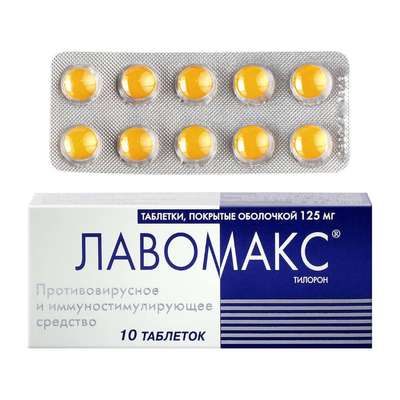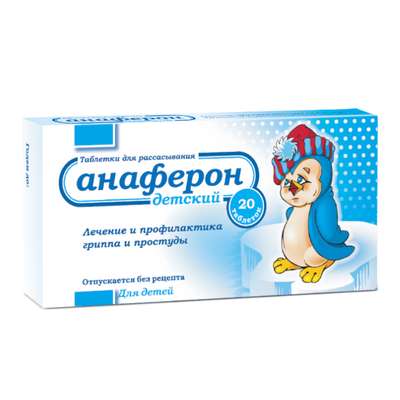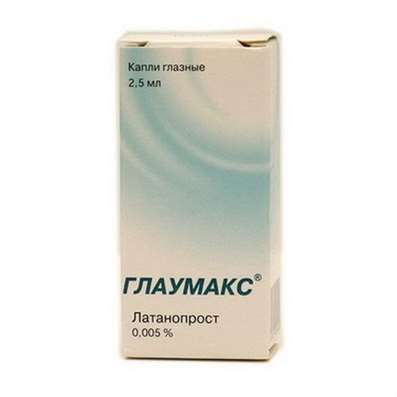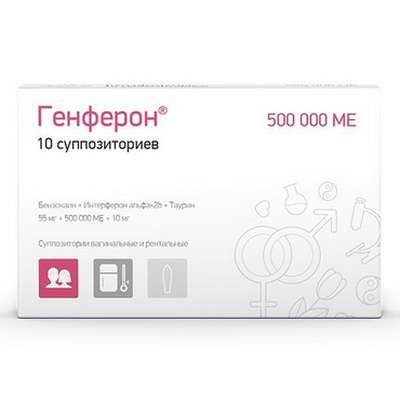Instruction for use: Rispolux
I want this, give me price
Dosage form: tablets
Active substance: Risperidone*
ATX
N05AX08 Risperidone
Pharmacological group:
Neuroleptics
The nosological classification (ICD-10)
F03 Dementia, unspecified: Degenerative dementia; Dementia; Dementia presenilnaya; Dementia senile; Primary degenerative dementia; Senile dementia; Senile dementia of the Alzheimer's type; Senile dementia; Syndromes of dementia; Dementia; Mixed Dementia; Mixed forms of dementia; Senile dementia; Senile Dementia
F20 Schizophrenia: Schizophrenic Conditions; An exacerbation of schizophrenia; Schizophrenia; Chronic schizophrenia; Dementia praecox; Bleuler's disease; Psychotic discordant; Dementia early; The febrile form of schizophrenia; Chronic schizophrenic disorder; Psychosis of the schizophrenic type; Acute form of schizophrenia; Acute schizophrenic disorder; Cerebral Organic Insufficiency in Schizophrenia; Acute attack of schizophrenia; Schizophrenic psychosis; Acute schizophrenia; Sluggish schizophrenia; Sluggish schizophrenia with apathoabulic disorders; Acute stage of schizophrenia with agitation
F22.0 Delusional Disorder: Delirium; Acute paranoid state; Othello Syndrome; Paranoid-hallucinatory state; Paranoid state; Paranoid delirium; paranoid psychosis; Paranoid delirium; Attack of delirium; The attack of polymorphic delirium; Psychotic disorder with a predominance of hallucinatory-paranoid symptoms and disorders of thinking; Anxious-delirious component; Anxiety and Paranoid Syndrome
F23.9 Acute and transient psychotic disorder, unspecified: Psychotic disorder; Somatized Mental Disorder; Acute psychotic disorder; Reactive psychosis
F31.1 Bipolar affective disorder, current episode of mania without psychotic symptoms: Mania in bipolar disorders
F31.2 Bipolar affective disorder, current episode of mania with psychotic symptoms: Manic episode of bipolar disorder; Mania in bipolar disorders
F39 Mood disturbance [affective], unspecified: Affective disorder; Affective disorders; Dysphoric states; Dysphoric disorder; Psychoemotional Disorder; Affective disorders; Emotional-labile upset; Cyclotimic personality
F60.3 Emotionally unstable personality disorder: Mood swings; Mental lability; Emotional fencing; Emotional detachment; Mood Change; Lability of mood; Instability of emotional background; Mixed emotional disorders; The state of emotional stress; Emotional lability; Emotional tension; Emotional instability; Emotional instability; Mood disturbance; Mood disorders; Decreased Mood; Deterioration of mood; Mood swings
F79 Mental retardation, unspecified: Mental retardation; Infantilism mental; Violation of mental activity; Oligophrenia; Lag behind mental development; Slowed development of intellectual abilities in children and adolescents; Delayed mental development in children; Maloumia; Oligopsihia; Mental failure; Impaired mental function; Lag behind in mental development; Lack of intellectual development in children; Lack of mental development in children; Mental retardation; Lack of mental development in children; Mental retardation
F91 Behavioral disorders: Juvenile and other behavioral disorders; Destructive behavior; Violation of behavior; Behavior Disorders; Mixed behavioral disorders; Behavioral Disorder; Behavioral disorder in adolescents with 15 years of age and adults; Violations in behavior; Behavioral disorders in childhood; Behavioral disorders in old age; Behavioral disorders in children; Behavioral disorders in children
R41.8.0 * Intellectual-mnestic disorders: Secondary impairments of mnestic functions; Difficulty concentrating; Difficulty of mental activity; Intellectual insufficiency; Intellectual-mnestic violation; Intellectual-mnestic disorder; Infantilism mental; Cognitive impairment; Intellectual disability; Breach of mnestic functions; Violation of mental activity; Thinking disorder; Impairment of mental performance; Dysfunction of mental function; Thinking disorders; The weakening of intellectual productivity; Lag behind mental development; Primary disorders of mnestic functions; Decrease in intellectual productivity; Decrease of intellectual-mnestic functions; Scattering; Mental Disorders; Disorder of thinking; Decreased intellectual productivity; Reduction of intellectual-mnestic functions; Decreased intellectual capacity; Decreased intellectual ability; Decreased intellectual abilities in elderly patients; Decreased mental function; Decreased memory in old age; Decreased mental activity; Decreased intellectual level; The deterioration of intellectual-mnestic functions; Chronic mental performance disorders
R45.1 Anxiety and agitation: Agitation; Anxiety; Explosive excitability; Internal stimulation; Excitability; Excitation; Excitation acute; Psychomotor agitation; Hyperexcitability; Motor excitement; Cessation of psychomotor agitation; Nervous excitement; Restlessness; Night trouble; Acute stage of schizophrenia with agitation; Acute mental agitation; Paroxysm of excitation; Overexcitation; Increased excitability; Increased nervous excitability; Increased emotional and cardiac excitability; Increased agitation; Mental arousal; Psychomotor agitation; Psychomotor agitation in psychoses; Psychomotor agitation of an epileptic nature; Psychomotor paroxysm; Psychomotor fit; Symptoms of Excitation; Symptoms of psychomotor agitation; The state of agitation; A state of anxiety; Excitation status; A state of heightened concern; The state of psychomotor agitation; Conditions of anxiety; Excitation conditions; The state of excitement in somatic diseases; Excitation level; Feelings of anxiety; Emotional arousal
R45.6 Physical aggressiveness: Aggressiveness; Aggressive states; Aggression; Aggressive behavior; Autoaggression
Composition
Tablets covered with a film membrane 1 tab.
active substance:
risperidone 1 mg; 2 mg; 3 mg; 4 mg
auxiliary substances: lactose monohydrate; ICC; pregelatinized starch; croscarmellose sodium; sodium lauryl sulfate; silicon dioxide colloidal anhydrous; magnesium stearate
film sheath:
film-coated tablets, 1 mg: opadrai white Y-1-7000 (hypromellose 5 cps (62.5%), titanium dioxide E171 (31.25%), macrogol (6.25%)
film coated tablets, 2 mg: opadrai pink 03B 54942 (hypromellose 6 cps (63.65%), titanium dioxide E171 (29.477%), macrogol 400 (6.3%), iron (III) oxide red (E172) (0.573%)
film coated tablets, 3 mg: opadrai yellow 03B 52852 (hypromellose 5 cps (62.5%), titanium dioxide E171 (28.75%), macrogol 400 (6.25%), quinoline yellow aluminum lacquer (2, 5%)
film coated tablets, 4 mg: opadrai pink 20A 54901 (giprolose (40%), hypromellose 6 cps (40%), titanium dioxide E171 (19.285%), iron (III) oxide red E 172 (0.645%), iron (III) oxide black E172 (0.07%)
Description of dosage form
Selective monoaminergic antagonist, has a high tropism for serotonergic 5-HT2- and dopaminergic D2-receptors, binds also to alpha-1-adrenoreceptors and somewhat weaker with H1-histaminergic and alpha2-adrenergic receptors. Has no tropism for cholinergic receptors.
Risperidone is especially effective in the treatment of schizophrenia with productive symptoms (delirium, hallucinations, aggressiveness), also has a positive effect with negative symptoms.
A balanced central antagonism to serotonin and dopamine can reduce the propensity to extrapyramidal side effects and extend the therapeutic effect of the drug to cover the negative and affective symptoms of schizophrenia. It causes less inhibition of motor activity and to a lesser degree induces catalepsy than classical antipsychotic antipsychotics.
Pharmacokinetics
Risperidone after oral intake is completely absorbed, reaching Cmax in the plasma after 1-2 hours. Eating does not affect the completeness and speed of absorption.
Metabolism is carried out with the help of cytochrome P450 CYP2D6 with the formation of 9-hydroxyrisperidone, the pharmacological activity of which is comparable with the activity of risperidone. Risperidone and 9-hydroxyrisperidone are the so-called. neuroleptic fraction. Risperidone is also subjected to the N-dealkylation reaction.
T1 / 2 is about 24 hours for 9-hydroxyrisperidone and the neuroleptic fraction as a whole.
When administered orally, 70% of the dose of risperidone is excreted by the kidneys (35-45% in the form of pharmacologically active fraction), 14% - with bile.
Plasma clearance for oral administration is 1.667 ml / s.
Stable concentrations of risperidone in the blood of most patients are achieved during the first day of treatment, 9-hydroxyrisperidone - on the 4-5th day. The concentrations of risperidone in plasma are proportional to the dose of the drug (within therapeutic doses).
In elderly patients, as well as in patients with renal insufficiency, the concentration of the drug in the plasma increases, and the half-life increases. The concentrations of risperidone in plasma in patients with hepatic insufficiency do not change.
Indication for the Rispolux
schizophrenia (relief exacerbation, maintenance therapy) and other psychotic disorders with a predominance of productive and / or negative symptoms;
bipolar disorder in mania;
affective disorders in various mental illnesses;
behavioral disorders in patients with dementia with symptoms of aggression, impaired performance (agitation, delirium) or psychotic symptoms;
Behavioral disorders in patients with reduced intellectual level or mental retardation, incl. as a means of assistive therapy for mood stabilization.
Contraindications
hypersensitivity to risperidone or other components of the drug;
lactation period.
Carefully:
severe renal and / or hepatic insufficiency;
cardiovascular diseases (chronic heart failure, suffered myocardial infarction, AV blockade);
hypovolemia;
conditions predisposing to the development of tachycardia such as "pirouette" (bradycardia, electrolyte imbalance, concomitant use of drugs that extend the QT interval);
Parkinson's disease;
impaired cerebral circulation;
Reye's syndrome;
epilepsy, convulsions in the anamnesis;
brain tumor;
acute drug overdose, drug dependence;
dysphagia;
intestinal obstruction;
children's age till 15 years (experience of application is limited);
pregnancy.
Application in pregnancy and lactation
The use of risperidone during pregnancy is only possible if the intended benefit to the mother exceeds the potential risk to the fetus.
The drug is excreted in breast milk, so when taking the drug, you must stop breastfeeding.
Side effects
Allergic reactions: skin rash, rhinitis, skin itching, angioedema, anaphylactic shock,
From the side of the CVS: orthostatic hypotension, reflex tachycardia, arterial hypertension, sinus bradycardia, AV blockade of I degree, atrial fibrillation, syncope, peripheral edema.
On the part of the gastrointestinal tract: dry mouth, nausea, vomiting, dyskinesia, indigestion, anorexia, abdominal pain, constipation, hypo- or hypersalivation, jaundice, dysphagia, gastritis, pancreatitis.
From the nervous system: insomnia, headache, dizziness, agitation, anxiety, drowsiness, fatigue, decreased ability to concentrate, convulsions; rarely - extrapyramidal disorders (tremor, rigidity, hypersalivation, bradykinesia, akathisia, acute dystonia), impaired coordination, speech impairment, hyposensitivity, sleep disturbance; disturbance of cerebral circulation (in elderly patients with predisposing factors).
In patients with schizophrenia: tardive dyskinesia (involuntary movements of the tongue and contractions of the facial muscles), malignant neuroleptic syndrome (hyperthermia, extreme rigidity of muscles, impaired consciousness, vegetative disorders, increased activity of creatine phosphokinase, tachypnea), epileptic seizures.
From the genitourinary system: priapism, erectile dysfunction, anorgasmia, urinary incontinence, ejaculatory impairment.
On the part of the endocrine system: galactorrhea, gynecomastia, menstrual irregularity, hyperglycemia, hyperprolactinaemia, impaired production of antidiuretic hormone.
Laboratory indicators: neutropenia, thrombocytopenia, anemia, granulocytopenia, agranulocytosis, increased ALT level, eosinophilia, leukopenia, increased AST level.
Other: dry skin, hyperpigmentation, photosensitivity, hyperkeratosis, increased sweating, weight gain, arthralgia, myalgia, blurred vision, mania, nasal congestion, epistaxis, sleep apnea, elderly patients with dementia, increased susceptibility to infections, polydipsia.
Interaction
Antacids reduce the absorption of oral neuroleptics.
Risperidone reduces the effectiveness of levodopa and other dopamine agonists.
Hypotensive drugs increase the severity of blood pressure lowering when taking risperidone.
Phenothiazine antipsychotics, tricyclic antidepressants and some beta-blockers with simultaneous administration with risperidone can increase its concentration in the blood plasma without affecting the concentration of the neuroleptic fraction.
Carbamazepine and other inducers of liver enzymes reduce the concentration of the active fraction of risperidone in plasma.
With the simultaneous administration of fluoxetine, the concentration of risperidone in the blood plasma increases, but the level of the neuroleptic fraction increases insignificantly.
Neuroleptics enhance the effect of alcohol, antihistamines, benzodiazepines and other drugs that depress the central nervous system.
Dosing and Administration
Inside, regardless of food intake, washing down with water.
Adults and children over 15 years.
The initial dose of Rispolux® for all patients (for acute manifestations of the disease and chronic course) is 2 mg / day (in 1 or 2 doses), on the second day - up to 4 mg / day; further, if necessary, the dose may be increased or decreased by 1-2 mg at weekly intervals. Doses above 10 mg / day did not show higher efficacy compared with smaller doses and could cause extrapyramidal symptoms. The maximum daily dose is 16 mg.
If it is necessary to achieve a sedative effect, benzodiazepines can be administered concomitantly with Rispolux®.
Renal and / or hepatic insufficiency and patients of the older age group. The recommended initial dose of Risporux® is 0.5 mg twice a day. This dose can be gradually (0.5 mg) increased to 1-2 mg per reception 2 times a day.
When switching to Rispolux® treatment, gradual abolition of the previously taken antipsychotic is recommended. If a neuroleptic-depot for parenteral administration has previously been used, the first dose of Rispolux® should be taken in place of injection in accordance with the mode of administration of the neuroleptic-depot.
Overdose
Symptoms: drowsiness, sedation, tachycardia, arterial hypotension, extrapyramidal symptoms, rarely - prolongation of the QT interval.
Treatment: In case of acute overdose, free airway patency should be ensured to ensure adequate oxygen supply and ventilation, ECG monitoring, gastric lavage, administration of activated carbon and laxatives; symptomatic therapy aimed at maintaining vital body functions; when developing extrapyramidal symptoms - the appointment of anticholinergic drugs. Continuous medical supervision should continue until the symptoms of intoxication disappear completely. There is no specific antidote.
Special instructions
Due to the fact that taking Rispolux® can lead to an increase in body weight, the patient should be advised on the diet.
When orthostatic hypotension occurs, especially at the beginning of treatment, a dose reduction should be considered. In patients with SSS, as well as with dehydration, hypovolemia or cerebrovascular disorders, the dose should be increased gradually.
With the withdrawal of carbamazepine and other inducers of hepatic enzymes, the dose of Risporux® should be reduced.
When symptoms of tardive dyskinesia or a malignant neuroleptic syndrome appear, consider reversing all antipsychotic drugs, including Rispolux®.
It is recommended that the drug be gradually phased out, because after a sharp cessation of treatment with high doses of neuroleptics, the development of withdrawal syndrome (vomiting, nausea, increased sweating, insomnia) is possible.
During treatment with risperidone, care should be taken when driving vehicles and engaging in other potentially hazardous activities requiring increased attention and speed of psychomotor reactions.
Release form
Tablets, film-coated, 1 mg or 2 mg. For 10 tab. in a blister, for 2, 5, 6 or 10 blisters in a cardboard bundle.
Tablets, film-coated, 3 mg or 4 mg. For 10 tab. in a blister, for 2, 5 or 6 blisters in a cardboard bundle.
Conditions of leave from pharmacies
On prescription.
Storage conditions for Rispolux
At a temperature of no higher than 25 ° C.
Keep out of the reach of children.
Shelf life of Rispolux
3 years.
Do not use after the expiry date printed on the package.

 Cart
Cart





